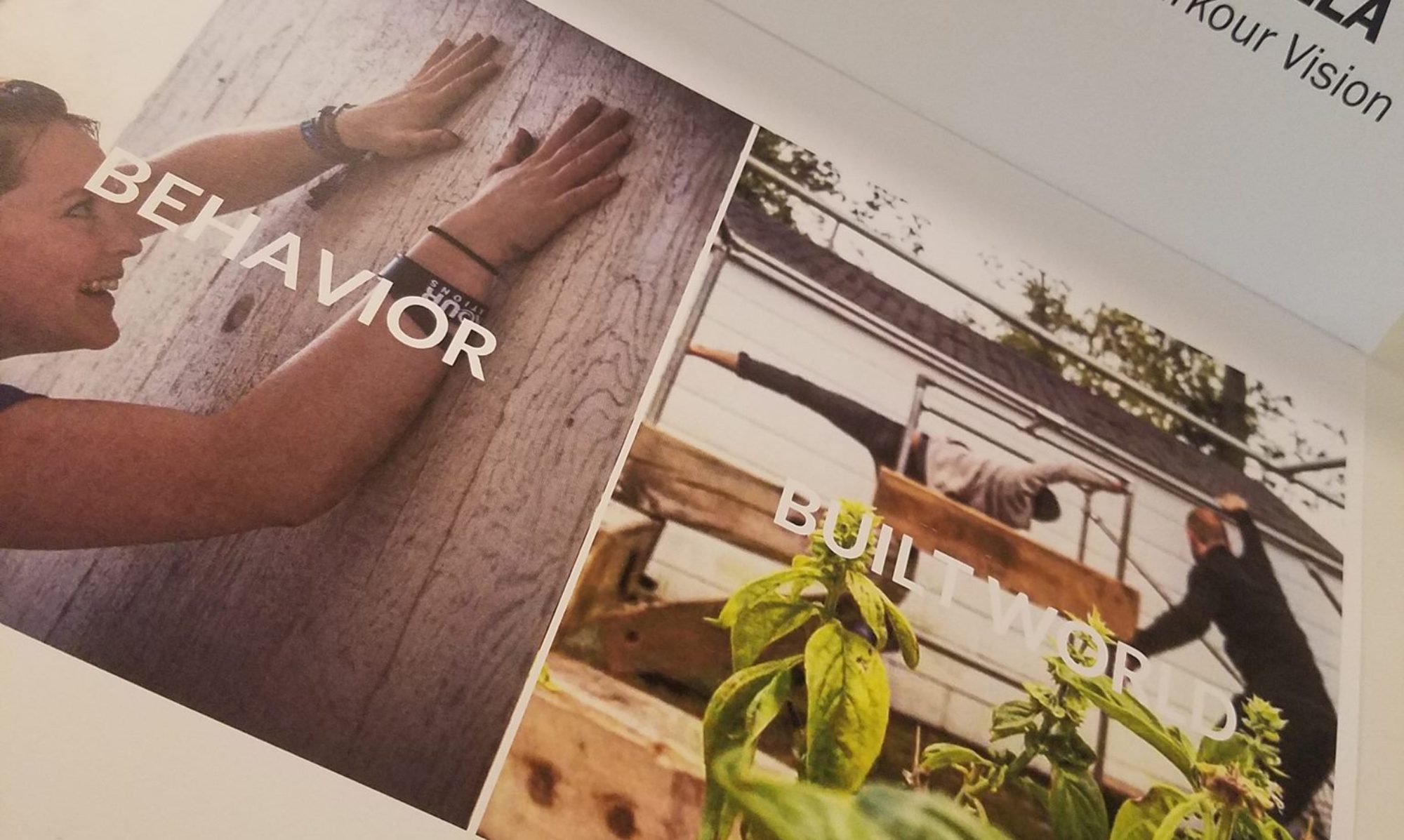This article is a part of the Public Parkour Park Roadmap Series by Caitlin Pontrella
This is a deceptively simple question. While there are maybe a dozen purpose-built parkour parks in North America as of 2020, informal parkour environments have existed all over the world in every single city in an unlimited number of forms for decades.
The reality is that the practice of parkour does not require a dedicated facility or location. Practitioners have been finding creative ways to transform the places they live into the places they play for over 30 years, discovering their own parkour parks and equipment in the wild–disguised as buildings, public squares, old playgrounds, large fountains, stairwells, construction scaffolding, and landscaping. (Wondering why should you bother with building a park if it can be practiced anywhere?)
Examples of parkour equipment in disguise
Benches
Bike Racks
Facades
Fences
Fire Escapes
Fountains
Handrailings
Mattresses
Ornamentation
Picnic Table
Puddles
Railroad Tracks
Retaining Walls
Road Markings
Rooftops
Scaffolding
Skateparks
Stairs
Trees
Wheelchair Ramps
I want you to start with this perspective: that everyone who has ever been in a park or public space has enjoyed a parkour environment. This is a powerful frame because it can open up new perspectives on how to enroll the wider community in the design these dedicated parks.
Question: What do recent parkour parks look like?
Components
Most purpose-built parkour parks and gyms are composed of geometric forms and structures of different shape, size, and height. These components have different adjacent, density, distance. Components are designed in consideration of the various movement typologies–running, jumping, swinging, climbing, crawling, balancing, etc
Materiality
Materials are as variable as any other type of playground–wood, concrete, brick, stone, plastic, steel, and rubber–and are permanently fixed. Flooring is designed for reducing impact such as grass, loose rubber, poured rubber, sand, or wood chips. This leaves a lot of room for designers to get creative.
Location, Size, Budget
Parks spaces have been (1)components in larger master plans, (2) independent stand alone builds, and (3) temporary installations. Size can vary from micro interventions (such as a bench re-design) to large scale action parks for 50+ people. For this reason, budget on a project can range from $1000 – 100,000+
These PK Parks are well suited for the ‘left over’ spaces of cities — beneath bridges and overpasses, in-between buildings–with lighting, signage and open access.
Furthermore, these are year-round accessible, with parkour practice encouraging training in diverse environmental conditions.
Users
Users are inter-generational, with teens and adults the primary user groups. You can learn more about the types of users that could activate this space in this article.








